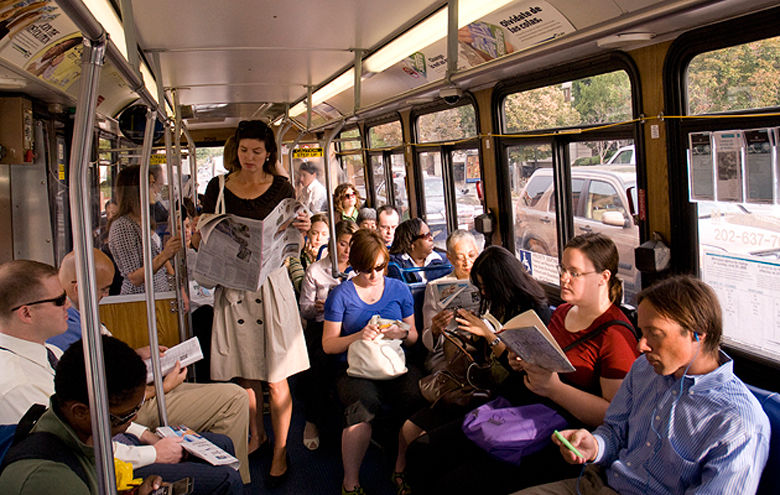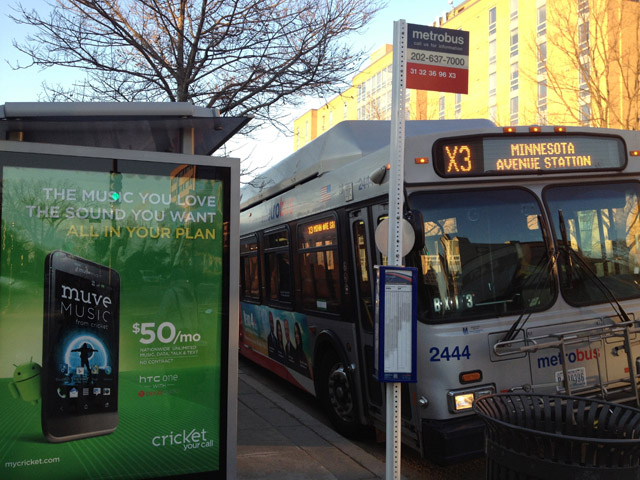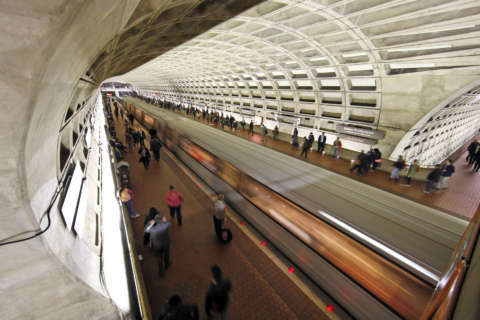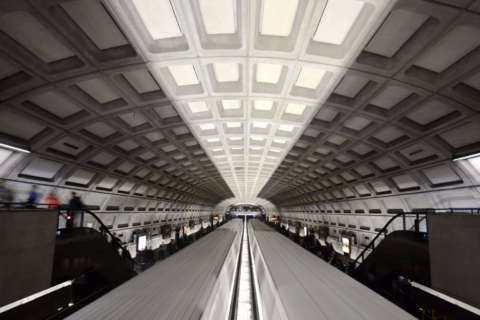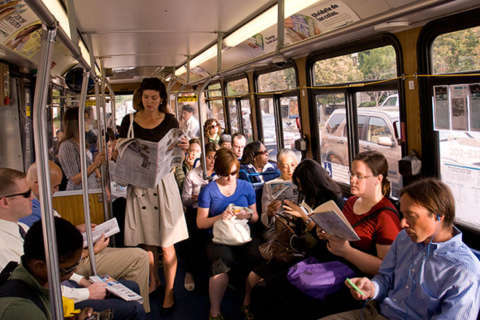
WASHINGTON — A higher proportion of people in the Metro system — riders and workers — were injured in July, August and September than the same period last year.
The bus rider injury rate rose 22 percent since last year to 2.28 per million trips, an increase mainly due to three crashes that injured several people each. One of those crashes was caused by a steel plate over a ditch giving way in Chinatown.
Employee injuries rose 24 percent compared to a year earlier to 7.22 injuries per 200,000 hours worked. More than half of the reported injuries were in the bus system, with 20 percent of all worker injuries in the quarter tied to collisions, and 15 percent tied to assaults on bus operators or other significant stressors.
Metro’s largest union has complained about a lack of protections against assaults. Metro Transit Police officers continue to patrol routes and train drivers on potential ways to reduce the risk. Metro leaders and the union have called for tougher criminal penalties for assaults on bus operators.
Reported Metrorail injuries rose slightly in the three-month period compared to a year earlier to 1.24 per million trips, which remains below Metro’s target of 1.75. The MetroAccess rider injury rate dropped 37 percent to 1.88 after two years of more significant issues.
In all, 149 Metro riders had reportable injuries over the three-month period while workers had 205 reportable injuries.
The most common reasons for the injuries remain bus collisions where Metro’s driver is not at-fault, and slips, trips and falls.
“These falls primarily occurred while passengers were running through the station, intoxicated, or trip on uneven or wet platform surfaces,” documents prepared for the Metro Board’s Safety Committee said.
Due to the high proportion of injuries tied to slips, trips and falls in stations and on escalators, Metro now plans to install more speakers on escalators that warn riders to watch their step, stand to the right, hold the handrail and keep an eye on small children among other basic safety tips.
The first talking escalator in the system, installed at Gallery Place-Chinatown this winter, was successful, the Metro documents said.
Metro is in the process of identifying where the new talking escalators, which Metro refers to as “automated safety messaging devices” should go.
Metro has also switched many station announcements to an automated voice that is meant to be clearer and easier to understand and continues to play music in several stations in an effort to make the system seem more appealing.

